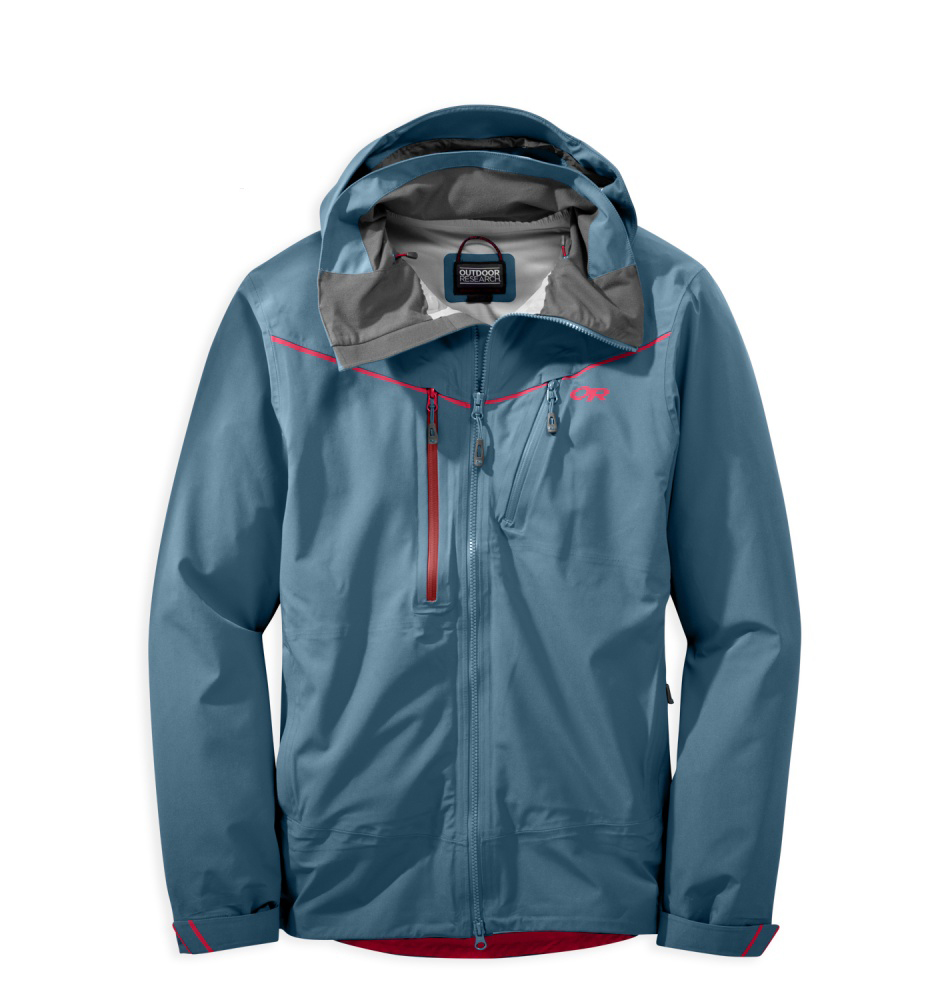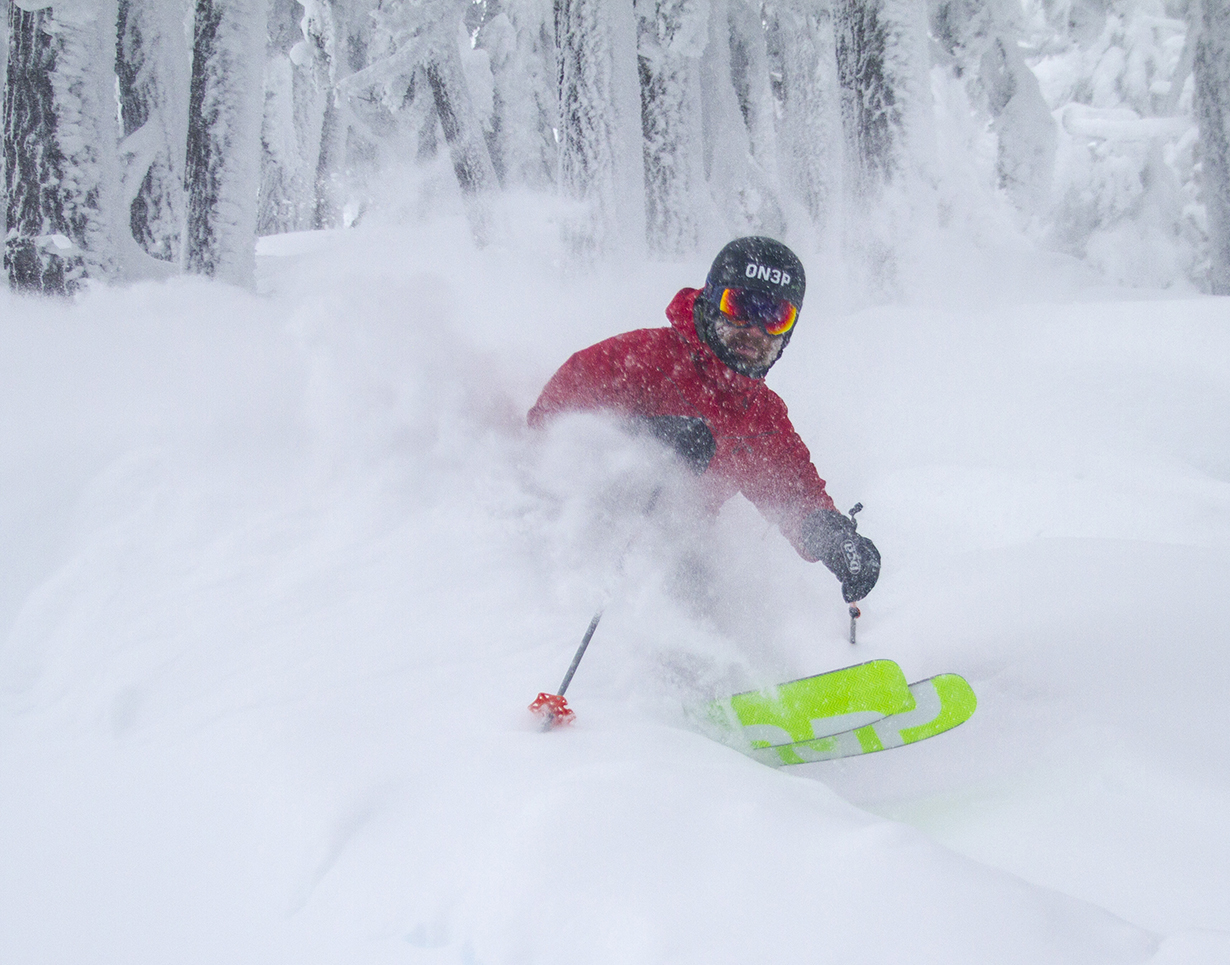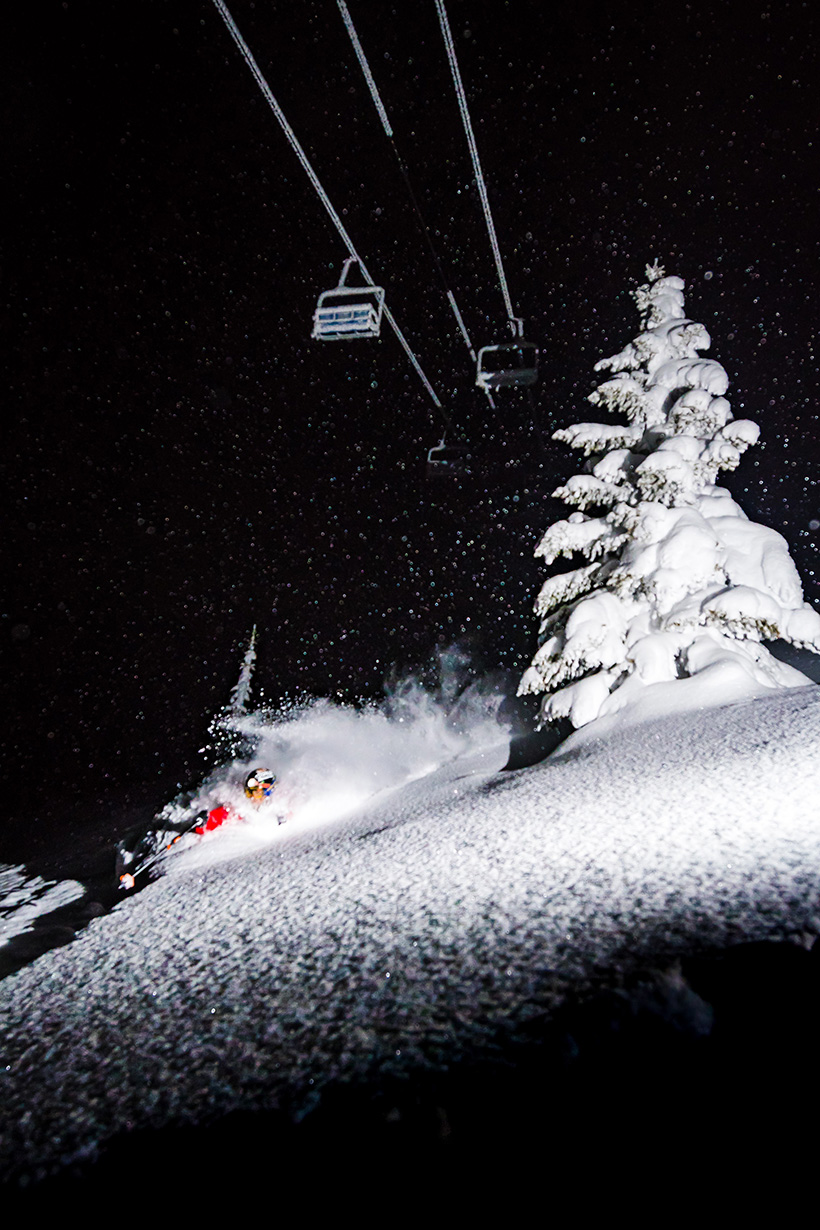
Size Tested: Large
Stated Weight (size Large): 26.0 oz
Blister’s Measured Weight (size Large): 26.0 oz
Measured Front Zipper Length: 78.0 cm
Stated Features:
- Helmet Compatible Wire-Brimmed Halo-Hood
- Stand-Up Collar
- YKK® AquaGuard® Zippers
- YKK® AquaGuard® Vislon Zippers
- TorsoFlo™ Venting – Hem-To-Bicep
- Two Internal Shove-It™ Pockets
- Dual-Sized Chest Pockets
- Zip Hand Pockets
- Internal Media Pocket
- Internal Front Stormflap
- Integrated Hood Cordlocks
- Brushed Tricot-Lined Collar
- Key Clip
- Double-Separating Center Front Zipper
- Pocket Placement Above Harness or Pack Belt
- Articulated Elbows
- Thumb Drive™ Hook/Loop Cuff Closures
- Elastic Cuffs
- Elastic Drawcord Hem
Fabric:
- Membrane: AscentShell 3 layer
- Face Fabric: 70D stretch plain weave 84% Nylon, 16% Spandex
- Backer: 30D 100% polyester
MSRP: $350
Reviewer: 5’ 8”, 200 lbs
Days tested: 8
Test locations: Mt. Bachelor, OR; Northwest Montana Backcountry, Whitefish Mountain Resort, Montana
Intro
Luke Koppa and I have both been putting time in the Outdoor Research Skyward jacket this season, and in his review of the Skywards, Luke wrote, “I wouldn’t hesitate to recommend the jacket to someone looking for a 50/50 jacket or someone who does a lot of hiking inbounds.”
I’d like to expand on that by talking about how the Skyward did with my body type (dwarf / hobbit / ewok / treestump, and preferences in shells to inform some of my differences with Luke’s findings. Specifically I’ll be looking at the Skyward from the perspective of someone who spends most of my time earning my turns, while Luke talked about the Skyward’s chops splitting time between the resort and the skin track I’ll be looking at it as a dedicated backcountry piece since Outdoor Research says ”If the words “ski season” make you think about moving uphill as much as downhill, the Skyward Jacket speaks your language.”

As Luke mentioned, the Skyward is one of OR’s first pieces to make use of Ascentshell, their proprietary air-permeable hardish-shell membrane. If you somehow missed class and the homework and don’t know what air-permeable membranes are, get properly schooled here. Sparknotes: air-permeables generally offer greater breathability than hard shells, but generally function much better than softshells when it comes to turning back precip.
Fit
The Skyward I tested is size Large and cut on the middle fitblock for Outdoor Research, their “Standard Fit.” It’s not actively sculpted, not monstrously loose—in the middle. I could fit into a Medium if need be.
The Skyward fits me better than the size Large Patagonia shells I’m also testing. It’s trimmer around the torso and the back of the shoulders, and the stretch in the fabric is also useful in these areas. The Skyward’s sleeve length is fine, and the hood fits comfortably over my climbing (Black Diamond Vector) and ski (Pret Cirque X) helmets with no problems.
Performance
Reviewing the Skyward has made me think, once again, about what I want in a backcountry-capable shell. I started backcountry skiing in a chunky, feature-heavy inbounds shell (the original Trew Powfunk). Since then, I’ve made my way down the road of lighter, more alpinism-focused shells that pack small, have few pockets, and are minimalist in design.
My theory and hope was that the Skyward would function enough like a softshell in its breathability and enough like a hardshell when the heavens opened up to be a good quiver-of-one. Sadly, this was not what I found.
My shell usually comes out on the uphill when it’s windy or snowing or both. The air-permeable, massively-vented Skyward should work really well for maintaining a good temperature while moving uphill. Yet, the biggest missing piece in the Skyward is its breathability—it simply doesn’t air out my sweltering body jungle when I’m moving. It didn’t vent well enough while skinning in the 15 degree F, 4% fluff that showed up the first week of December in Montana. Then, while breaking trail in a 31 degree F February storm, I again found myself sweating hard, even with the gargantuan pit/torso zips wide open.

Later the same month, we headed up in mid-20s F inch-an-hour nuke-age and the Skyward pulled a hat trick by managing to wet out in the shoulders, get me sweaty, and then freeze into a solid, useless slab of red fabric when I took it off at our transition. So—not exactly breathable.
Furthermore, Ascentshell in the Skyward compares poorly with other air-perm fabrics I’ve used (notably Polartec Neoshell). With Neoshell, I could definitely feel a higher threshold of breathability while exerting myself in alpine terrain and snowy conditions. Not so in the Skyward, which feels akin to some of the lower-end hardshells I’ve used.
I’d be willing to overlook how over-featured Skyward is (and thus how heavy) in exchange for better breathability, because the coat can turn back the nasty with aplomb. However, for my heavier frame and higher level of exertion, the Ascentshell just couldn’t keep up.
Durability
The Skyward, after eight days of testing, looks much the same as when it arrived on my doorstep: I’ve had zero issues with its durability during that very limited window. It feels like a burly garment that would make up for being overbuilt by lasting for a while, but I haven’t had enough time in the jacket to prove that in actuality.
Bottom Line
Luke framed it well in his review of the Outdoor Research Skyward Jacket: if you’re a person who likes to hike inbounds with a bit of skinning, and you want something that can handle the rigors of lifts and that short bit of exertion with plenty of pockets, the Skyward should be on your list. But if you’re a bigger guy or girl who sweats and likes more stripped-down shell options, or if you’re looking for a shell to use primarily while touring, you’ll have better luck elsewhere.
